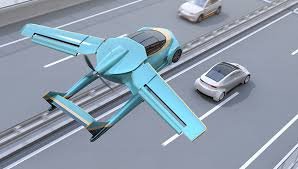Flying Cars: The Future of Transportation?
For as long as we can remember, people have been fascinated with the idea of flying cars. The thought of being able to soar above the traffic and arrive at our destination in a fraction of the time is something that has captured the imagination of many. But is it really possible? In this blog post, we’ll explore the current state of flying cars and whether they’re the future of transportation.

What are Flying Cars?
Flying cars, also known as personal air vehicles (PAVs), are vehicles that are designed to be driven on the road but also have the ability to take off and land like an aircraft. They have been a popular concept in science fiction for decades, but in recent years, advances in technology have made them more of a reality than ever before.
Current State of Flying Cars
While the idea of flying cars may seem like something out of a science fiction movie, there are already prototypes and working models of PAVs in development. Companies like Terrafugia, AeroMobil, and PAL-V have been working on creating functional flying cars that can be used for personal transportation.

However, there are still a number of obstacles that need to be overcome before flying cars become a reality. One of the biggest challenges is safety. Flying cars need to be able to operate in busy airspace without colliding with other aircraft or crashing into buildings. They also need to be able to operate safely in adverse weather conditions.
Another challenge is the cost. Flying cars will likely be significantly more expensive than traditional cars due to the advanced technology and materials required to make them fly. This means that they may not be accessible to everyone, at least not initially.
Benefits of Flying Cars

Despite the challenges, there are many potential benefits to using flying cars for personal transportation. For one, they would greatly reduce travel times. With the ability to fly over traffic, commuting times could be reduced from hours to minutes. This could also help to alleviate congestion on the roads, reducing air pollution and greenhouse gas emissions.
Flying cars could also provide a new level of freedom and flexibility in personal transportation. Rather than being limited to roads, people could travel directly from point A to point B, regardless of the terrain or obstacles in between.
Are Flying Cars the Future of Transportation?
While flying cars may seem like a far-off dream, they could be closer than we think. With continued advancements in technology and increased investment in the development of PAVs, we may see functional flying cars in the not-too-distant future.
However, it’s important to note that flying cars are unlikely to replace traditional cars entirely. They will likely be used in conjunction with other forms of transportation, such as public transit and ride-sharing services.

In conclusion, flying cars may be the future of transportation, but there are still many challenges to overcome before they become a reality. Safety and cost are two major factors that need to be addressed, but the potential benefits of flying cars are significant. Only time will tell whether flying cars will become a viable mode of transportation, but for now, we can dream of a future where we can soar above the traffic and arrive at our destination in style.
Well as cool as this were, I would trust many normal car driver behind wheels, let go of flying ones.
Sure there'd be stuff like air-teslas but yeah. Until then it's ✈️
Cheerio